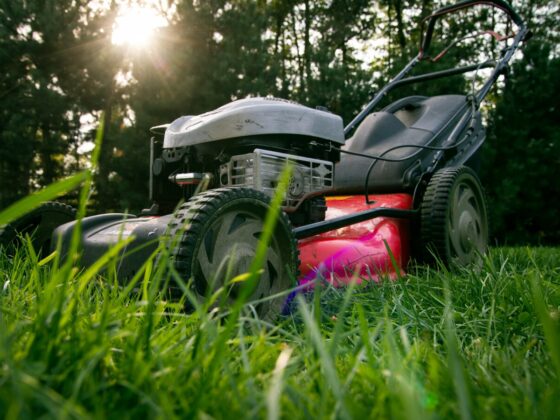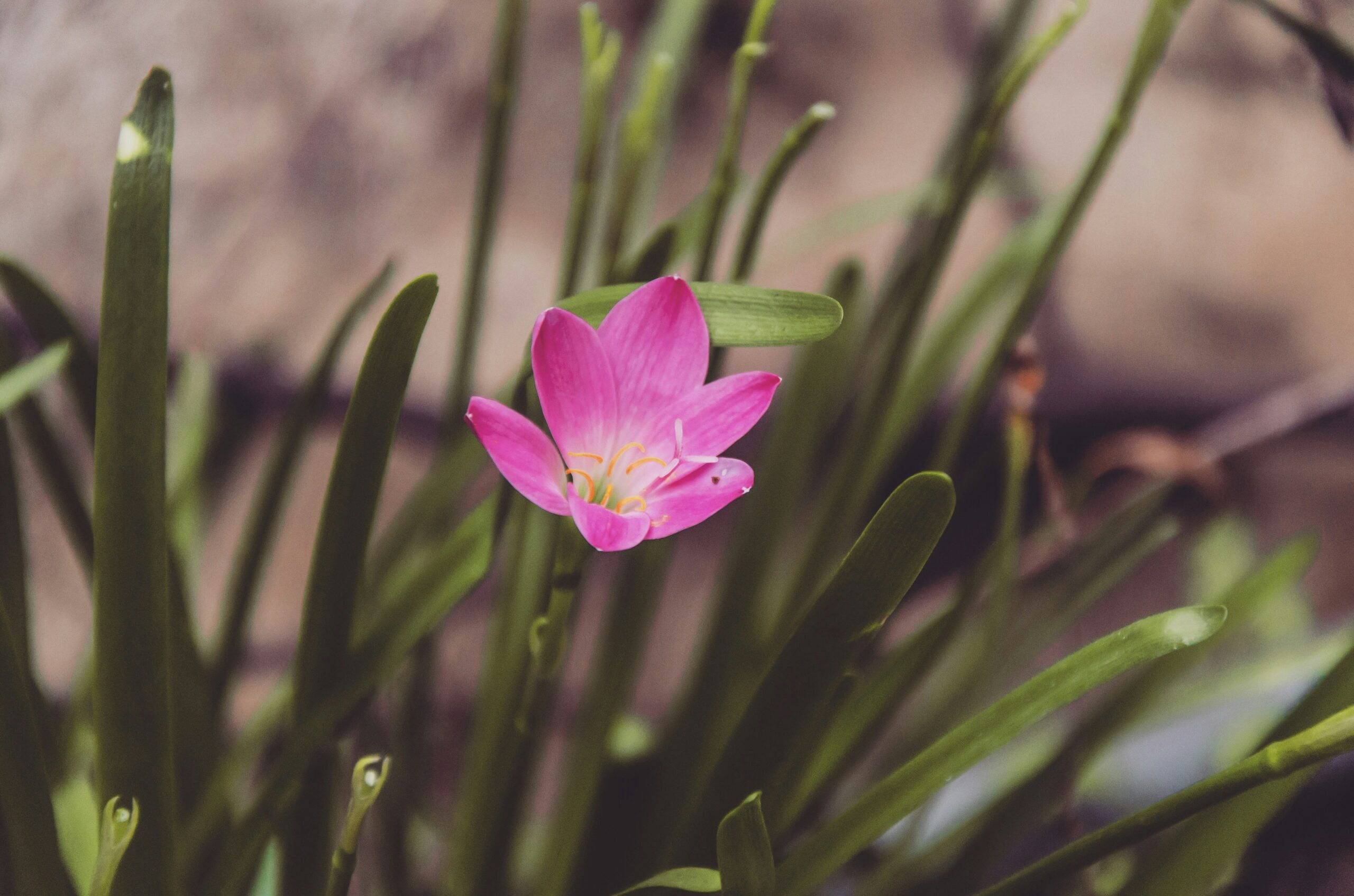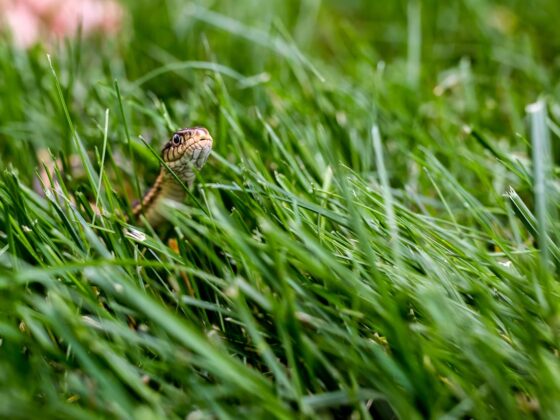Tulips, daffodils, and other spring bulbs are a welcome sight after a long winter. They brighten up the garden with their cheerful colours and herald the arrival of a new season. But did you know that you can make them even more beautiful by pairing them with companion plants?

Companion plants are plants that grow well together and complement each other in terms of appearance, growth habits, and cultural needs. They can also help hide the fading foliage of the bulbs as they go dormant, extend the blooming season, and create a more diverse and attractive landscape.
In this article, we will share some tips on how to choose the best companion plants for your spring bulbs, and suggest some of our favourite combinations that you can try in your own garden.
Tips for Choosing Companion Plants for Spring Bulbs
- Choose companion plants with similar growing requirements. For example, if your bulbs prefer full sun and well-drained soil, look for plants that thrive in the same conditions. Avoid plants that need a lot of water or shade, as they may compete with or harm the bulbs.
- Choose companion plants that are short when the bulbs are in bloom, so they don’t block the view. You can also plant the bulbs in front of taller plants, or mix them with plants that have airy or fine-textured foliage that won’t obscure the flowers.
- Choose companion plants that don’t need frequent division, so you won’t disturb the bulbs. Some bulbs, such as daffodils and grape hyacinths, naturalize and multiply over time, and don’t like to be moved. Choose perennials that are long-lived and low-maintenance, and avoid annuals that need to be replanted every year.
- Choose companion plants that have dense foliage to disguise the yellowing bulb leaves. As the bulbs finish their flowering cycle, their leaves start to wither and die back. This is a natural process that allows the bulbs to store energy for the next season, and you should not cut them off until they are completely brown. To hide this unsightly phase, plant companion plants that have lush and green foliage that will cover the dying bulb leaves.
- Choose companion plants that bloom later than the bulbs, to extend the blooming season. Spring bulbs usually bloom from late winter to early summer, depending on the type and variety. To keep your garden colourful and interesting, plant companion plants that will flower after the bulbs are done, or that have attractive seed heads or berries that will last into fall.
Tulips

Tulips are one of the most popular and versatile spring bulbs, with a wide range of colours, shapes, and sizes. They bloom from early to late spring, depending on the variety, and prefer full sun and well-drained soil. Some of the best companion plants for tulips are:
- Basket-of-gold (Aurinia saxatilis): This low-growing perennial has yellow flowers and silver foliage that complement the bright colours of tulips. It prefers well-drained, sandy soil, and is great for the front of the border or rock garden.
- Catmint (Nepeta x faassenii): This aromatic perennial has lavender-blue flowers that bloom from mid-spring to fall, and cover the ripening tulip foliage. It is drought-tolerant and deer-resistant and attracts bees and butterflies.
- Cranesbill (Geranium spp.): This mounding perennial has flowers in shades of pink, purple, blue, and white that bloom from mid-spring to fall. It has a neat habit that covers the ripening tulip foliage and can be cut back after flowering to encourage new growth.
- Garden phlox (Phlox paniculata): This tall perennial has flowers in many shades of lavender, pink, red, and white that attract birds and butterflies. It blooms from mid- to late summer, and won’t overshadow the spring bulbs. It is also pest-resistant and low-maintenance.
Daffodils

Daffodils are cheerful and hardy spring bulbs that come in various colours, shapes, and sizes. They bloom from late winter to early summer, depending on the variety, and prefer full sun to part shade and well-drained soil. Some of the best companion plants for daffodils are:
- Azaleas and rhododendrons: These early-flowering shrubs have vivid pink, red, purple, or white blossoms that complement the yellow and white colours of daffodils. They prefer acidic, moist, and well-drained soil, and part shade to full sun.
- Spring phlox (Phlox subulata and other hybrids): This low-growing perennial has flowers in shades of pink, purple, blue, and white that create a carpet of colour around the daffodils. It prefers well-drained soil and full sun and is drought-tolerant and deer-resistant.
- Hostas: These shade-loving perennials have large and lush foliage in various colours, shapes, and sizes that hide the fading daffodil leaves. They also have spikes of lavender or white flowers in summer that add interest to the garden. They prefer moist, rich, and well-drained soil and part shade to full shade.
- Hellebores: These evergreen perennials have nodding flowers in shades of pink, purple, white, yellow, and green that bloom from late winter to early spring, along with the daffodils. They prefer moist, well-drained soil, and part shade to full shade. They are also deer-resistant and drought-tolerant.
Other Spring Bulbs
There are many other spring bulbs that you can plant in your garden, such as crocus, grape hyacinth, hyacinth, allium, and snowdrop. They have different blooming times, colours, and sizes, and can be mixed and matched with various companion plants. Some of the best companion plants for other spring bulbs are:
- Globe thistle (Echinops ritro): This spiky perennial has blue globe-shaped flowers that contrast with the delicate shapes and colours of other spring bulbs. It blooms from mid to late summer and prefers full sun and well-drained soil. It is also drought-tolerant and deer-resistant and attracts bees and butterflies.
- Baby’s breath (Gypsophila paniculata): This airy perennial has tiny white flowers that create a cloud of softness around the other spring bulbs. It blooms from late spring to early summer and prefers full sun and well-drained soil. It is also drought-tolerant and deer-resistant and can be used as a cut flower.
- Coral bells (Heuchera spp.): This colourful perennial has foliage in various shades of green, purple, bronze, and silver that add interest to the garden even when not in bloom. It also has spikes of pink, red, or white flowers in late spring to early summer that attract hummingbirds. It prefers moist, well-drained soil, and part shade to full sun.
- Columbine (Aquilegia spp.): This graceful perennial has flowers in various colours and shapes that nod above the foliage of other spring bulbs. It blooms from late spring to early summer and prefers moist, well-drained soil, and part shade to full sun. It is also deer-resistant and attracts hummingbirds and butterflies.
Conclusion
Spring bulbs are a wonderful way to add colour and joy to your garden after a long winter. By pairing them with companion plants, you can enhance their beauty, hide their fading foliage, extend the blooming season, and create a more diverse and attractive landscape. Try some of the combinations we suggested, or experiment with your own favorites, and enjoy the results!
Frequently Asked Question
Companion plants are plants that are grown alongside other plants to provide benefits such as pest control, improved soil fertility, and increased pollination. In the case of spring bulbs, companion plants can help enhance their beauty and provide additional interest in the garden.
Companion planting with spring bulbs can offer a range of benefits. It can help deter pests that may be attracted to the bulbs, attract beneficial insects like bees and butterflies for pollination, and provide a visually appealing contrast to the bulbs.
There are several companion plants that pair well with spring bulbs. Some popular choices include daffodils with grape hyacinths, tulips with forget-me-nots, and crocuses with pansies. It’s important to choose companion plants that have similar growing requirements and complement the colours and heights of the bulbs.
When planting companion plants with your spring bulbs, it’s best to consider their spacing and depth requirements. Plant the bulbs first at the recommended depth, and then plant the companion plants around them, ensuring they have enough space to grow without competing for resources.
Yes, companion plants can help extend the blooming season of your spring bulbs. By choosing companion plants that bloom at different times, you can create a succession of colours and ensure that your garden remains vibrant for a longer period.
While companion planting can be beneficial, there are some plants that may not work well with spring bulbs. Avoid planting companion plants that have aggressive growth habits or require different soil conditions, as they may outcompete or hinder the growth of the bulbs.
To maintain the health of both your companion plants and spring bulbs, it’s important to provide adequate water, sunlight, and nutrient-rich soil. Regularly monitor for pests and diseases, and take appropriate measures to address any issues that may arise.
Yes, companion planting can be applied to other types of bulbs as well. Whether you’re planting summer-flowering bulbs like lilies or fall-planted bulbs like garlic, incorporating companion plants can enhance their growth and overall garden appeal.











29 comments
I love how this blog gives a voice to important social and political issues It’s important to use your platform for good, and you do that flawlessly
The work is truly inspirational. It’s as if you’ve found a way to whisper sweet nothings to my intellect.
The words are like seeds, planting ideas that blossom into understanding and appreciation.
This Writing is a treasure trove of knowledge. Thank you for The contributions!
Brilliant writing! You’ve captured the essence perfectly, much like a photographer captures a stunning landscape.
I appreciate the balance and fairness in The writing, like a perfect partner who always keeps things interesting. Great job!
I’m amazed by the depth and breadth of The knowledge. Thanks for sharing!
Thank you for consistently producing such high-high quality content.
The breadth of The knowledge is amazing. Thanks for sharing The insights with us.
The post was a beacon of knowledge. Thanks for casting light on this subject for me.
The Writing is a go-to resource, like a favorite coffee shop where the barista knows The order. Always comforting.
A beacon of knowledge, or so I thought until I realized it’s just The shining confidence.
Thoughtful analysis that made me think, which is quite the feat these days.
Explaining things in an understandable way is a skill, and you’ve mastered it. Thanks for clearing things up for me.
The Writing is like a secret garden, each post a path leading to new discoveries and delights.
Unique perspective? Check. Making me rethink my life choices? Double-check.
Consistently high-high quality content, as if you’re trying to show us all up.
The posts are like stars in the sky—each one shining brightly, guiding my curiosity.
The perspective is like a rare gem, valuable and unique in the vastness of the internet.
You tackled a hard to understand issue with elegance and insight. I feel much more informed after reading The post.
I always learn something new from The posts, like discovering new facets of a gem. Thanks for the gems!
A gift for explaining things, making the rest of us look bad.
I’m amazed by the depth and breadth of The knowledge. Thanks for sharing!
The depth of The understanding is as mesmerizing as the ocean. I’m ready to dive in.
I’m so grateful for the information you’ve shared. It’s been incredibly enlightening!
Making hard to understand topics accessible is a gift, and you have it. Thanks for sharing it with us.
This post was a breath of fresh air. Thank you for The unique insights!
Discovering The Writing felt like finding the perfect match. The intellect and charm are a rare combo.
Your point of view caught my eye and was very interesting. Thanks. I have a question for you.